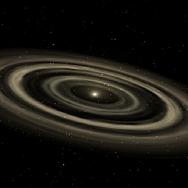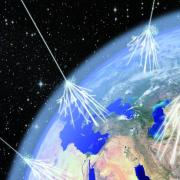The origin of life on Earth stands as one of the great mysteries of science. Various answers have been proposed, all of which remain unverified. To find out if we are alone in the galaxy, we will need to better understand what geochemical conditions nurtured the first life forms. What water, chemistry and temperature cycles fostered the chemical reactions that allowed life to emerge on our planet? Because life arose in the largely unknown surface conditions of Earth’s early history, answering these and other questions remains a challenge.
Several seminal experiments in this topic have been conducted at the University of Chicago, including the Miller-Urey experiment that suggested how the building blocks of life could form in a primordial soup.
Jump to a section:
- When did life on Earth begin?
- Where did life on Earth begin?
- What are the ingredients of life on Earth?
- What are the major scientific theories for how life emerged?
- What is chirality and why is it biologically important?
- What research are UChicago scientists currently conducting on the origins of life?
When did life on Earth begin?
Earth is about 4.5 billion years old. Scientists think that by 4.3 billion years ago, Earth may have developed conditions suitable to support life. The oldest known fossils, however, are only 3.7 billion years old. During that 600 million-year window, life may have emerged repeatedly, only to be snuffed out by catastrophic collisions with asteroids and comets.
The details of those early events are not well preserved in Earth’s oldest rocks. Some hints come from the oldest zircons, highly durable minerals that formed in magma. Scientists have found traces of a form of carbon—an important element in living organisms—in one such 4.1 billion-year-old zircon. However, it does not provide enough evidence to prove life’s existence at that early date.
Where did life on Earth begin?
Two possibilities are in volcanically active hydrothermal environments on land and at sea.
Some microorganisms thrive in the scalding, highly acidic hot springs environments like those found today in Iceland, Norway and Yellowstone National Park. The same goes for deep-sea hydrothermal vents. These chimney-like vents form where seawater comes into contact with magma on the ocean floor, resulting in streams of superheated plumes. The microorganisms that live near such plumes have led some scientists to suggest them as the birthplaces of Earth’s first life forms.



















 —Prof. Chuan He
—Prof. Chuan He
